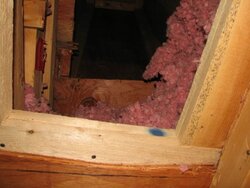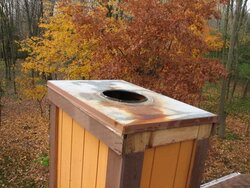After some serious consideration and info from the forums I made a decision and now have a question on install.
I'm installing a class A chimney for my Osburn Stratford. The 6" Dura-vent chimney I got with the unit from the dealer. Reading the install this chimney (Simpson dura-vent) requires ventilated roof flashing, and rafter protectors which the dealer never brought up as being required.
1. I have galvanized metal around, can I use that as my rafter protectors putting it outside the clearance requirements and attaching it to the rafters?
2. I have 2' of attic space which the chimney passes through (firestop and attic insulation shield will be here) then into a 6' chase above roof line (uninsulated) with a metal chase cap. The chase is open to the attic where the chimney breaks the roof plane into the chase so some venting does go into the attic. Do I need to have a vented chase cap or put vents on the chase side to accommodate the required ventilated roof flashing requirement by the Dura-vent chimney?
Thanks
I'm installing a class A chimney for my Osburn Stratford. The 6" Dura-vent chimney I got with the unit from the dealer. Reading the install this chimney (Simpson dura-vent) requires ventilated roof flashing, and rafter protectors which the dealer never brought up as being required.
1. I have galvanized metal around, can I use that as my rafter protectors putting it outside the clearance requirements and attaching it to the rafters?
2. I have 2' of attic space which the chimney passes through (firestop and attic insulation shield will be here) then into a 6' chase above roof line (uninsulated) with a metal chase cap. The chase is open to the attic where the chimney breaks the roof plane into the chase so some venting does go into the attic. Do I need to have a vented chase cap or put vents on the chase side to accommodate the required ventilated roof flashing requirement by the Dura-vent chimney?
Thanks






